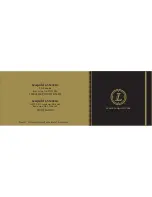
P
P
o
o
w
w
e
e
r
r
S
S
e
e
e
e
k
k
e
e
r
r
®
®
S
S
e
e
r
r
i
i
e
e
s
s
T
T
e
e
l
l
e
e
s
s
c
c
o
o
p
p
e
e
s
s
I
I
N
N
S
S
T
T
R
R
U
U
C
C
T
T
I
I
O
O
N
N
M
M
A
A
N
N
U
U
A
A
L
L
●
●
P
P
o
o
w
w
e
e
r
r
S
S
e
e
e
e
k
k
e
e
r
r
6
6
0
0
E
E
Q
Q
#
#
2
2
1
1
0
0
4
4
3
3
●
●
P
P
o
o
w
w
e
e
r
r
S
S
e
e
e
e
k
k
e
e
r
r
7
7
0
0
E
E
Q
Q
#
#
2
2
1
1
0
0
3
3
7
7
●
●
P
P
o
o
w
w
e
e
r
r
S
S
e
e
e
e
k
k
e
e
r
r
8
8
0
0
E
E
Q
Q
#
#
2
2
1
1
0
0
4
4
8
8
●
●
P
P
o
o
w
w
e
e
r
r
S
S
e
e
e
e
k
k
e
e
r
r
1
1
1
1
4
4
E
E
Q
Q
#
#
2
2
1
1
0
0
4
4
5
5
●
●
P
P
o
o
w
w
e
e
r
r
S
S
e
e
e
e
k
k
e
e
r
r
1
1
2
2
7
7
E
E
Q
Q
#
#
2
2
1
1
0
0
4
4
9
9
ENGLISH


































